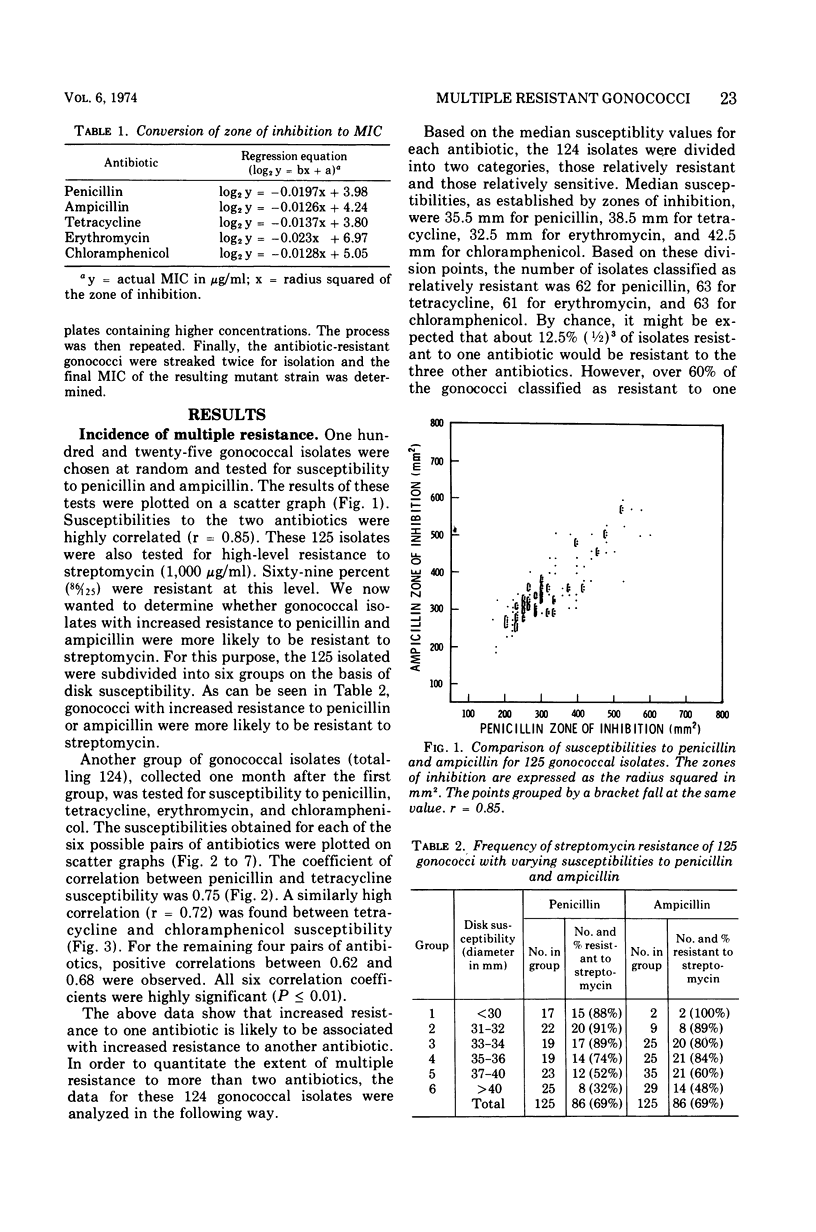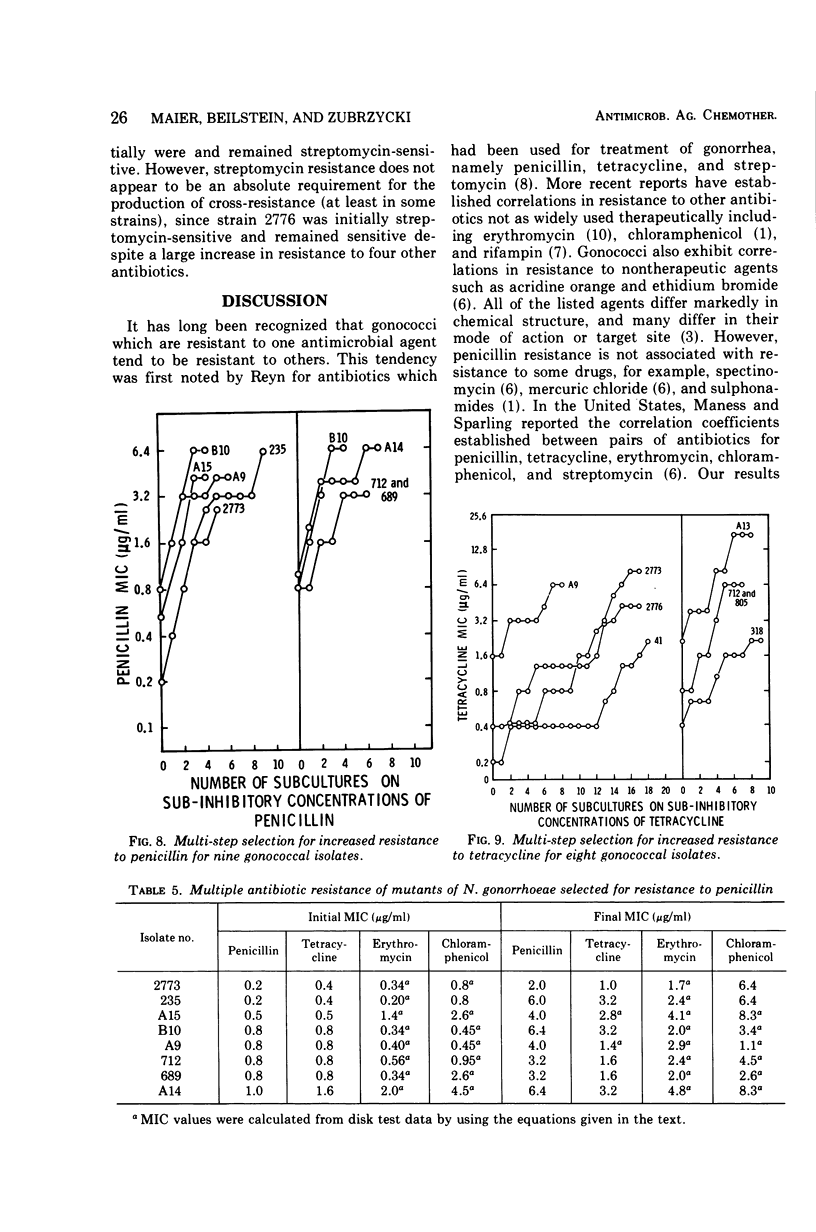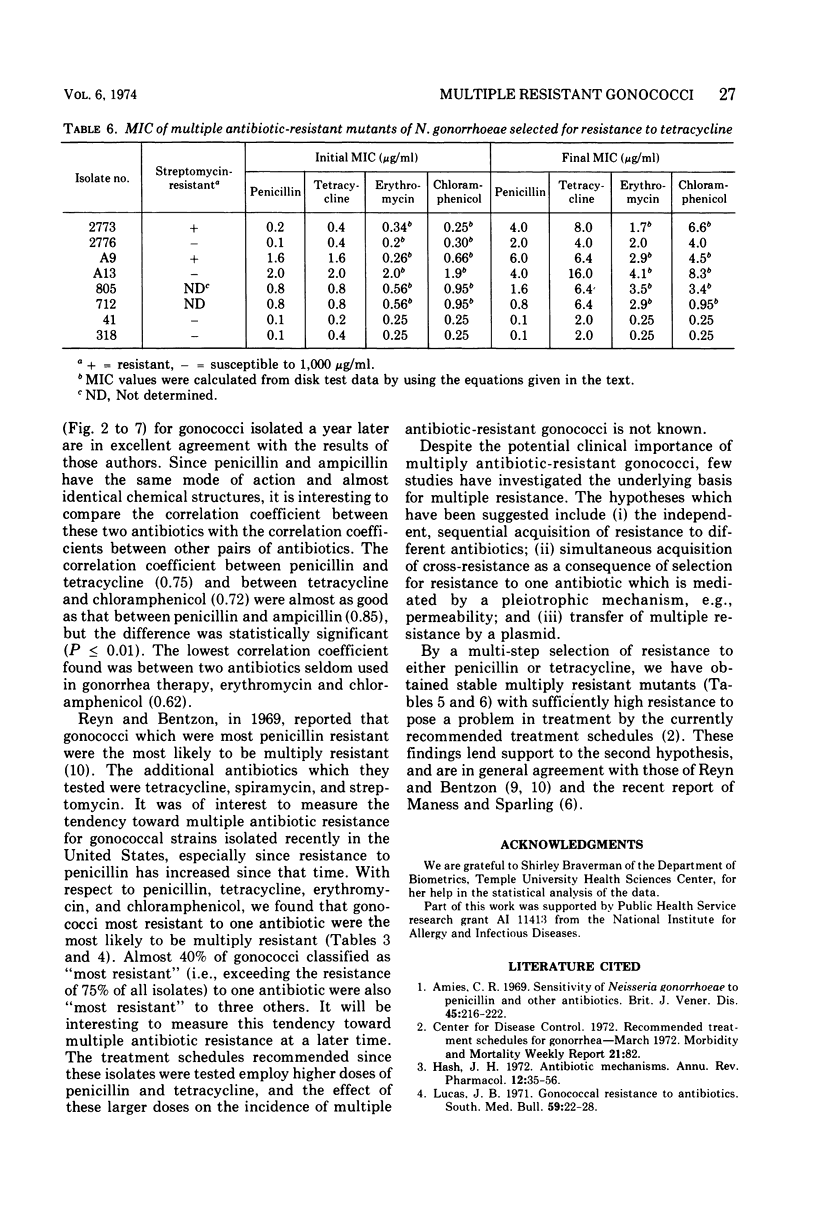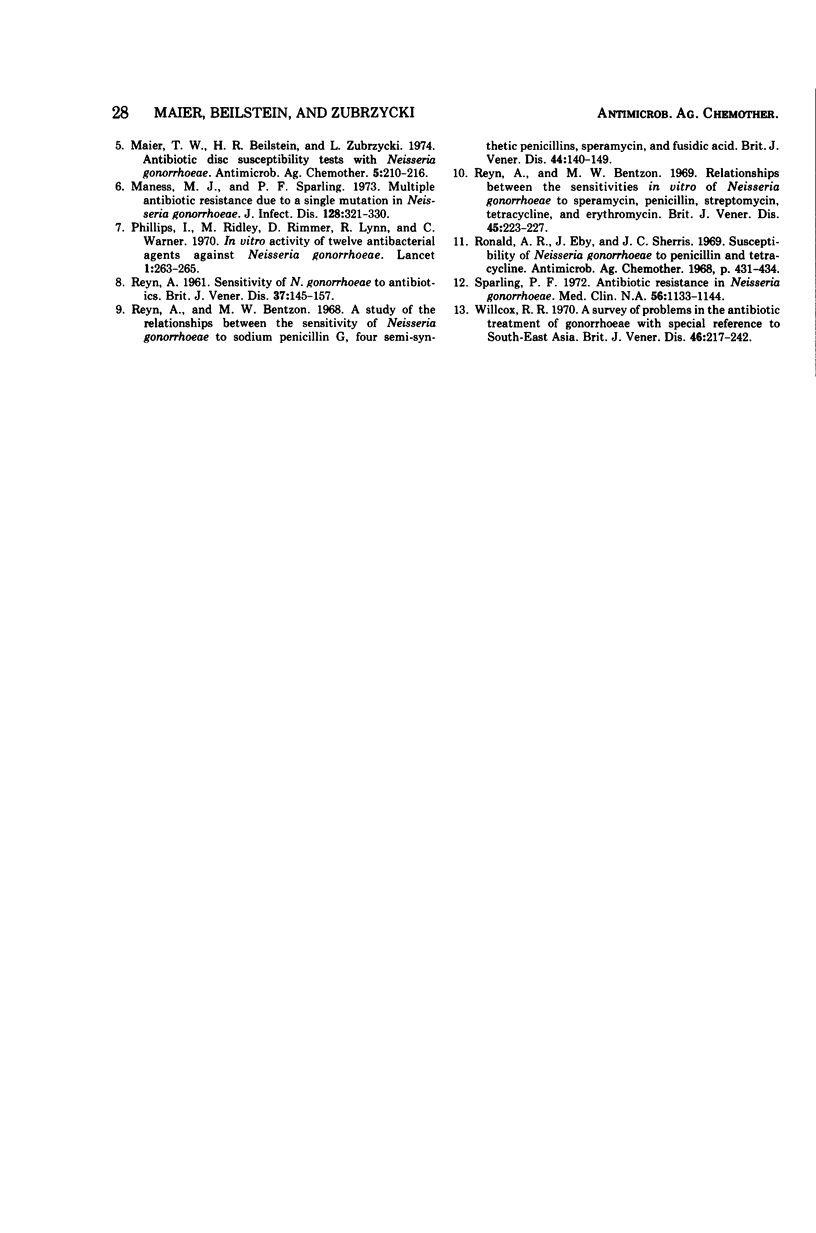Abstract
The sensitivities of gonococcal isolates to six antibiotics were determined for gonococci isolated in Philadelphia in 1972. The degree of association between susceptibilities to any two antibiotics was determined (coefficient of correlation). The correlation between penicillin and tetracycline (r = 0.75) was almost as good as that between two penicillins, penicillin G and ampicillin (r = 0.85), but the difference was statistically significant. The lowest correlation found was between erythromycin and chloramphenicol (r = 0.62), two antibiotics seldom used in gonorrhea therapy. In addition, gonococci most resistant to one antibiotic were the most likely to be multiply resistant. This was found with respect to penicillin, tetracycline, erythromycin, and chloramphenicol. Approximately 40% of gonococci classified as “most resistant” (exceeding the resistance of 75% of all isolates) to one antibiotic were also “most resistant” to three others. Finally, multiply resistant mutants were isolated by selection for resistance to either penicillin or tetracycline. These results provide evidence for the existence of a common mechanism for multiple antibiotic resistance in the gonococcus.
Full text
PDF






Selected References
These references are in PubMed. This may not be the complete list of references from this article.
- Amies C. R. Sensitivity of Neisseria gonorrhoeae to penicillin and other antibiotics. Studies carried out in Toronto during the period 1961 to 1968. Br J Vener Dis. 1969 Sep;45(3):216–222. doi: 10.1136/sti.45.3.216. [DOI] [PMC free article] [PubMed] [Google Scholar]
- Hash J. H. Antibiotic mechanisms. Annu Rev Pharmacol. 1972;12:35–56. doi: 10.1146/annurev.pa.12.040172.000343. [DOI] [PubMed] [Google Scholar]
- Maier T. W., Beilstein H. R., Zubrzycki L. Antibiotic disk susceptibility tests with Neisseria gonorrhoeae. Antimicrob Agents Chemother. 1974 Mar;5(3):210–216. doi: 10.1128/aac.5.3.210. [DOI] [PMC free article] [PubMed] [Google Scholar]
- Maness M. J., Sparling P. F. Multiple antibiotic resistance due to a single mutation in Neisseria gonorrhoeae. J Infect Dis. 1973 Sep;128(3):321–330. doi: 10.1093/infdis/128.3.321. [DOI] [PubMed] [Google Scholar]
- Phillips I., Ridley M., Rimmer D., Lynn R. In-vitro activity of twelve antibacterial agents against Neisseria gonorrhoeae. Lancet. 1970 Feb 7;1(7641):263–265. doi: 10.1016/s0140-6736(70)90635-5. [DOI] [PubMed] [Google Scholar]
- REYN A. Sensitivity of N. gonorrhoeae to antibiotics. Br J Vener Dis. 1961 Jun;37:145–157. doi: 10.1136/sti.37.2.145. [DOI] [PMC free article] [PubMed] [Google Scholar]
- Reyn A., Bentzon M. W. Relationships between the sensitivities in vitro of Neisseria gonorrhoeae to spiramycin, penicillin, streptomycin, tetracycline, and erythromycin. Br J Vener Dis. 1969 Sep;45(3):223–227. doi: 10.1136/sti.45.3.223. [DOI] [PMC free article] [PubMed] [Google Scholar]
- Reyn A., Benzon M. W. A study of the relationships between the sensitivities of Neisseria gonorrhoeae to sodium penicillin G, four semi-synthetic penicillins, spiramycin, and fusidic acid. Br J Vener Dis. 1968 Jun;44(2):140–150. doi: 10.1136/sti.44.2.140. [DOI] [PMC free article] [PubMed] [Google Scholar]
- Ronald A. R., Eby J., Sherris J. C. Susceptibility of Neisseria gonorrhoeae to penicillin and tetracycline. Antimicrob Agents Chemother (Bethesda) 1968;8:431–434. [PubMed] [Google Scholar]
- Sparling P. F. Antibiotic resistance in Neisseria gonorrhoeae. Med Clin North Am. 1972 Sep;56(5):1133–1144. doi: 10.1016/s0025-7125(16)32339-2. [DOI] [PubMed] [Google Scholar]
- Willcox R. R. A survey of problems in the antibiotic treatment of gonorrhoea. With special reference to South-East Asia. Br J Vener Dis. 1970 Jun;46(3):217–242. doi: 10.1136/sti.46.3.217. [DOI] [PMC free article] [PubMed] [Google Scholar]


